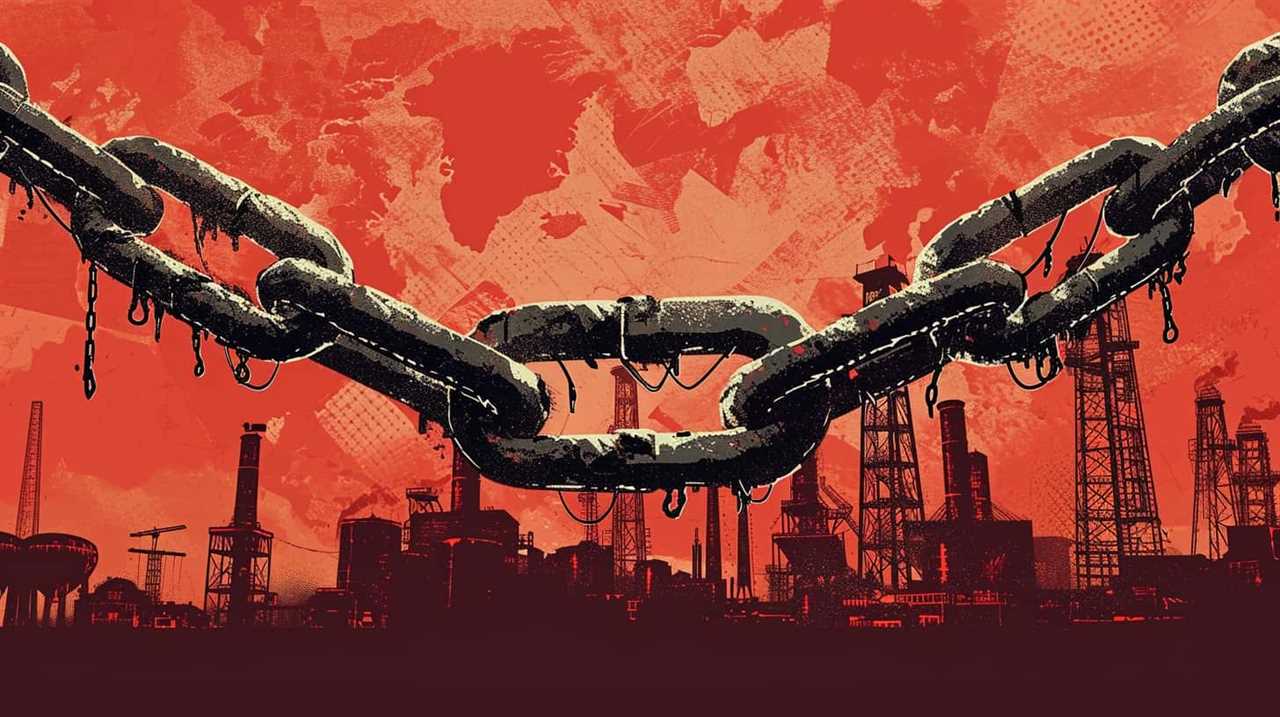Are you interested in learning more about the theory of price discovery? You’re in the right place! In this brief article, we’ll delve into the top three insights from Hayek on price discovery.
Hayek, a renowned economist, offers a fresh perspective on how prices are determined in the market. By examining his views on market competition and his critique of central planning, we can gain valuable insights into the dynamic nature of price discovery.
This exploration is especially relevant for those seeking innovative approaches to understanding and navigating the complexities of the market. So, let’s delve into Hayek’s wisdom and uncover the hidden truths behind price discovery!
Key Takeaways
- Prices serve as crucial signals in the market, conveying information about scarcity and consumer preferences.
- Accurate interpretation of price signals is crucial for innovation and market success, as it identifies emerging opportunities.
- Market competition is essential for efficient resource allocation, as prices in a competitive market reflect individual preferences.
- Central planning fails to account for market complexities and lacks the feedback mechanism provided by price signals, limiting innovation, adaptability, and individual freedom.
Hayek’s Perspective on Price Discovery
One of Hayek’s key insights on price discovery is that prices serve as crucial signals in the market. According to Hayek’s interpretation of spontaneous order, the market is a complex system that evolves organically through the interactions of countless individuals pursuing their own self-interests. In this dynamic process, prices emerge as a result of the interaction between buyers and sellers, reflecting the underlying supply and demand conditions.

Hayek’s analysis of price signals highlights their role in conveying vital information to market participants. Prices act as a form of communication, conveying information about the scarcity of goods and services, as well as the preferences and valuations of consumers. Through this process, prices help guide resource allocation and enable individuals to make informed decisions about production and consumption.
Understanding and interpreting price signals is crucial for innovation and market success. Entrepreneurs and businesses that can accurately interpret price signals are better equipped to identify emerging opportunities and adapt their strategies accordingly. Additionally, price signals enable market participants to coordinate their actions in a decentralized manner, leading to efficient resource allocation and economic growth.
Transitioning into Hayek’s views on market competition, it becomes clear that his analysis of price discovery is closely linked to his understanding of the competitive market process.
Hayek’s Views on Market Competition
Exploring Hayek’s perspective on market competition, we recognize the integral role it plays in his analysis of price discovery. Hayek believed that market competition is essential for the efficient allocation of resources and the determination of market equilibrium. In a competitive market, prices are determined through the interaction of supply and demand, reflecting the preferences and valuations of individual market participants.

Hayek emphasized the importance of decentralized decision-making in market competition. He argued that individuals possess unique knowledge and information about their own circumstances, needs, and abilities. This dispersed knowledge can’t be fully captured by a central authority or planner. Instead, Hayek advocated for a system where individuals are free to make their own economic decisions based on their specific knowledge and preferences.
Market competition, according to Hayek, acts as a discovery process. It allows for the exploration and experimentation of different ways to meet consumer demands and allocate resources efficiently. Through competition, firms are incentivized to innovate, improve their products, and find cost-effective ways to produce and deliver goods and services.
Furthermore, Hayek believed that competition fosters an environment of continuous learning and adaptation. It encourages market participants to constantly assess and adjust their strategies in response to changing market conditions and consumer preferences. This dynamic process of competition leads to the discovery of new opportunities, the elimination of inefficiencies, and the overall improvement of the market system.
Hayek’s Critique of Central Planning
Hayek’s critique of central planning centers around its inefficiencies and limitations. He argues that central planning, which involves a top-down approach to economic decision-making, fails to account for the complexities of the market and the role of individuals in shaping economic outcomes.

One of Hayek’s key criticisms is the problem of economic calculation under central planning. In a centrally planned economy, prices are determined by the state rather than by the interactions of buyers and sellers in the market. This means that there is no market feedback mechanism to signal scarcity, allocate resources efficiently, or coordinate economic activity. Without accurate price signals, central planners lack the necessary information to make informed decisions about resource allocation.
Furthermore, Hayek emphasizes the importance of spontaneous order in the market. He argues that the market is a complex system that emerges organically from the interactions of countless individuals pursuing their own self-interest. This spontaneous order, driven by the decentralized decisions of individuals, leads to a more efficient allocation of resources and greater overall prosperity.
To illustrate these points, let’s consider the following table:
| Central Planning | Market Economy |
|---|---|
| Lack of price signals | Price signals provide information |
| Top-down decision-making | Decentralized decision-making |
| Inefficient resource allocation | Efficient resource allocation |
| Limited innovation and adaptability | Encourages innovation and adaptability |
| Centralized control | Individual freedom and choice |
Frequently Asked Questions
How Does Hayek Define Price Discovery and Why Is It Important in a Market Economy?
Price discovery, as defined by Hayek, is the process by which prices in a market economy are determined through the interaction of supply and demand. It is crucial as it helps allocate resources efficiently and promotes competition and innovation.

What Are Some Key Factors That Hayek Believes Contribute to Market Competition?
Factors that Hayek believes contribute to market competition include the existence of multiple buyers and sellers, freedom of entry and exit, and the absence of artificial barriers. These elements foster innovation, efficiency, and a dynamic marketplace.
How Does Hayek View the Role of Government in Regulating Market Competition?
In understanding Hayek’s insights on the role of government in regulating market competition, we find that he emphasizes the importance of allowing market forces to operate freely, as government intervention can hinder price discovery and impede competition.
What Are Some Potential Drawbacks or Limitations of Hayek’s Perspective on Price Discovery?
Some potential drawbacks or limitations of Hayek’s perspective on price discovery include the possibility of market failures, lack of consideration for externalities, and the potential for unequal distribution of resources.
How Does Hayek’s Critique of Central Planning Align With His Views on Market Competition and Price Discovery?
Hayek’s critique of central planning aligns with his views on market competition and price discovery. He argued that central planning hinders the spontaneous order of the market, which is crucial for efficient price discovery and competition.

What Can Hayek’s Insights on Price Discovery Teach Us About Deciphering Egyptian Hieroglyphics?
Hayek’s insights on price discovery can also be applied to deciphering Egyptian hieroglyphics. Just as market prices reflect the dispersed knowledge of countless individuals, hieroglyphics unveil classics about ancient Egyptian culture and history. Both processes rely on tapping into dispersed information to uncover valuable insights.
Conclusion
In conclusion, Hayek’s insights on price discovery highlight the importance of decentralized markets and competition for efficient resource allocation. His critique of central planning emphasizes the limitations of top-down decision-making and the value of individual knowledge and choice.
Like a well-tuned orchestra, the market harmonizes the diverse interests and information of countless participants, creating a symphony of economic coordination. Hayek’s ideas remind us that the beauty of market mechanisms lies in their ability to bring out the best in us and foster prosperity for all.
Lauren’s talent in writing is matched by her passion for storytelling. Her love for books and deep understanding of culture and entertainment add a distinct flavor to her work. As our media and press contact, Lauren skillfully bridges the gap between afterQuotes and the broader media landscape, bringing our message to a wider audience.










